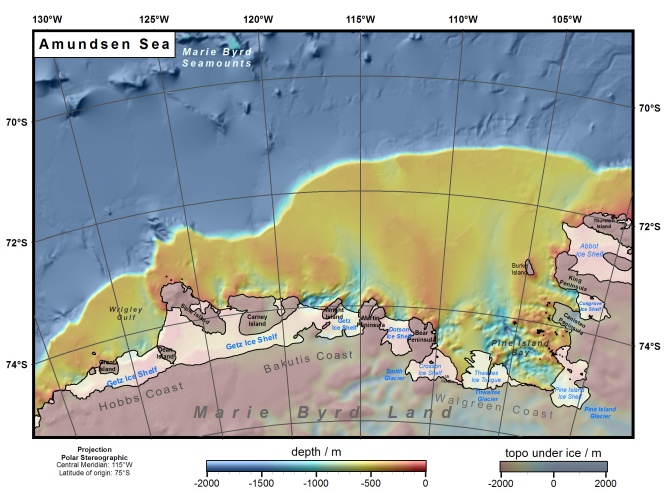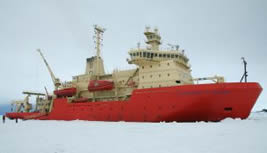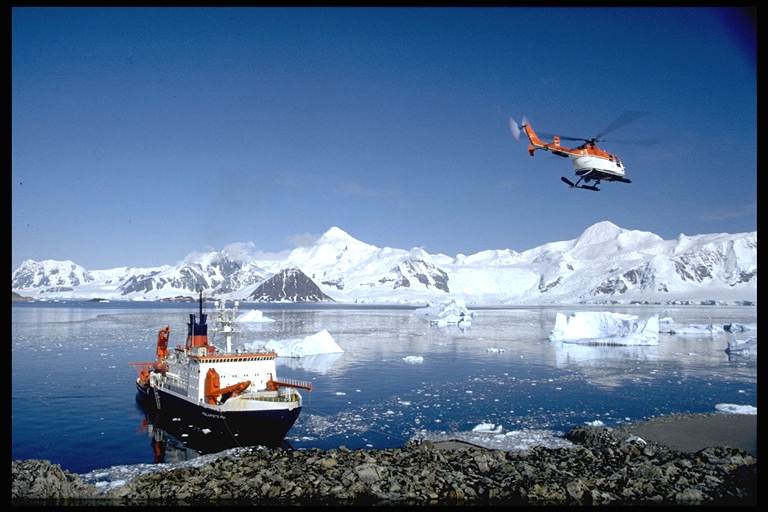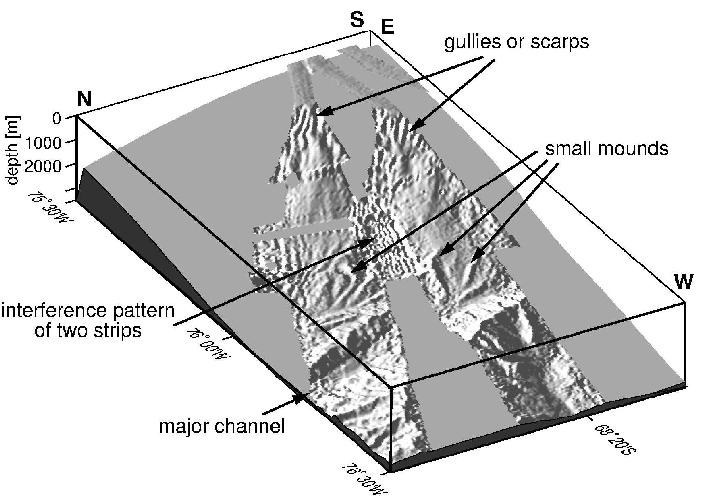“Melting of the Antarctic Ice Sheets–
Ice and ocean interaction: consequences for sea-level rise”
with Frank Nitsche
Originally presented 13 Feb 2016
Abstract:
Satellite measurements are showing that the large ice sheets in Greenland and Antarctica are thinning and losing mass. The melting of these ice sheets is increasing sea level globally and endangering coastal areas. One of the main drivers for the ice sheet thinning is warmer ocean water that is reaching the base of the ice streams in Antarctica and Greenland and thus is increasing melting from underneath. For better estimates how much of the ice sheets might be melting in the future and how fast this could happen we need to better under-stand the processes of how and where the warmer ocean waters are reaching the ice and interacting with it.
However, the ice covered ocean around Antarctica make it difficult to do the necessary measurements and there are many areas, where we do not have the necessary information. I will present the background of this topic and show findings from research expeditions from different parts of Antarctica. I will describe the measurement that we are conducting on board of icebreakers to study these processes and what we are finding. Finally, I will discuss how the results are used in ice sheet models and what this tells us (or not) about future sea level rise.

Frank’s research interests focus on large parts of the earth surface are shaped by sedimentary processes. He is fascinated with complex sedimentary features, their morphology, and understanding the mechanisms that built and modified these features. Based on his background in geophysics and geology he is using geophysical techniques to image the morphology, extent, and internal structure of complex sedimentary features to understand their evolution as well as the controlling processes. Frank explores new ways to combine and interpret different data sets using Geographic Information Systems (GIS) and to integrate geophysical data with information from sediment cores or biological observations.He is particularly interested in estuarine processes, sediment transport and deposition on continental margins, and glacially-influenced sediments. It is his goal to understand the evolution of present and past morphology better, what causes and controls deposition, erosion, and, the resulting shape of sedimentary features.
INTRODUCTORY SLIDE SHOW (ppt) pdf
VIEW FRANK NITSCHE’S PRESENTATION (pdf)
Cutting-Edge Research
Links to some of Frank’s polar research projects:
Frank’s blog posts about “Melting Glaciers–Tracking Their Path”
“Vulnerability of the East Antarctic Ice Sheet”

Icebreaker “NB Pamer”
“Sedimentation Processes along the Continental Margin if West Australia”


Frank’s previous Earth2Class presentations:
“Footprints of Past Glaciation–Discovering Traces of Ice on the Bottom of the Ocean” (Mar 2011)
“Science In and Beneath the Hudson’s Waters” (Apr 2010)
Other pertinent publications:
Dominique Richardson (Polartrec Educator):
“Antarctic Ice Stream Dynamics”
“Exploring the Oceans: CTDs”
“Drones in a Cold Climate”
Polartrec (Teachers and Researchers Exploring and Collaborating)
Related LDEO Research: Greenland’s Ice Is Getting Darker, Increasing Risk of Melting
Other outreach web pages:
NASA video “A Tour of the Cryosphere: Earth’s Frozen Assets”
NASA IceSat 2 (Ice, Cloud, and Land Elevation Satellite 2)
NASA Learning From Satellites: Antarctica — Salt Concentration
NSIDC “About the Cryosphere”
NSIDC “Educational Resources”



Classroom Resources–Educational Program
ANDRILL ARISE (Antarctic Research Immersion for Science Educators)
COSEE (Centers for Ocean Science Education Excellence) Antarctica Resources
CRESIS (Center for Remote Sensing of Ice Sheets) Educational Resources
Classroom Resources–History of Discovery
Timeline of Discoveries in Antarctica
International Polar Year (IPY) 2007 – 2008

Integrating Educational Technologies
“TELLING THE STORY OF MELTING ICE SHEETS”
The Challenge
Antarctica is very far away from your classroom and community, so how can investigators and teachers accompanying them tell the World what is happening there?
Communicating halfway around the world–such as with Antarctica–used to be limited to written messages and take months. But electronic communication make it possible to engage in oral or written exchanges that are almost as fast as cross-town exchanges.
Among formats possible for such communication are Skype, blogs, Twitter, YouTube, Facebook, and e-mail. These make it possible for your students in the classroom to interact with research scientists in Antarctica. Even after expeditions end, you can make use of archived versions to excite your students about Polar Science and the Nature of Scientific Discovery.
Example: Using Videos about Teachers in Antarctica
There are many ways to locate suitable videos showing teachers working with scientists in Antarctica.
You can start with a Google or YouTube search, which may produce a result such as “Teachers in the Freezer.”
Another possible resource is James Balog’s TED Talk on “Time-Lapse Proof of Extreme Ice Loss” (suggested by E2C participant Debra Magalini)
In a group or individually, use this or other videos to respond to the “Assignment” below.
Scientific investigations also make for fact- or fiction-based stories. Sarah Andrews is a former petroleum geologist who has created a successful career as a mystery writer with more than ten novels featuring “Em Hansen, Forensic Geologist.” Sarah was asked by the National Science Foundation to use her skills to help share understanding of polar research. The result was “In Cold Pursuit.” This describes examples of research on Antarctica, the living conditions, and, in a couple of cases, circumstances of cold-blooded murder. (This may be the only mystery story with the disclaimer, “No geologists were sacrificed in the creation of this story.”)
Consider ways to incorporate fiction or fact-based writing into your curriculum.
Your Assignment
1) What characteristics make electronic communication effective as a classroom teaching tool?
2) When should electronic communication be used for full-class instruction, and when should they be used for small groups or individual projects?
3) Describe strategies to locate suitable electronic communication resources for your classes.
and
4) Design a lesson plan that incorporates at least one electronic communication format.
E2C Follow-up:
You may send your model lesson and other responses to this “assignment” to michael@earth2class.org. If suitable, we will post your work in the E2C lesson plans and/or add them to this section of the Workshop website.


